- phototoxicity
- Phototoxic ornamental plants (selection)
- Phototoxic crops (selection)
- frequently asked Questions
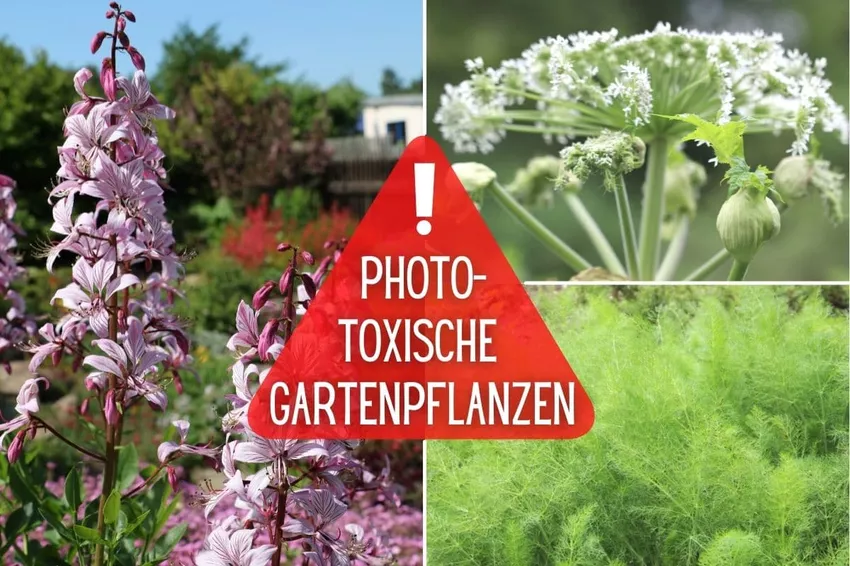
It is well known that plants can contain toxic substances. Few people know, however, that various plants in the garden can contain substances that can only become dangerous for humans when they are exposed to the sun. That is why we have listed 20 phototoxic plants here.
In a nutshell
- phototoxic substances can cause severe skin burns when exposed to sunlight
- Protection of hands, arms, legs and feet with clothing and shoes is recommended when handling these plants
- Skin reactions can also take hours to appear
- phototoxic effect of some plants controversial
- some vegetables and herbs can also have a phototoxic effect
phototoxicity
Phototoxicity describes the property, or more precisely the strength, of substances that cause changes to the skin surface of humans and animals when exposed to sunlight. The reactions of the skin are triggered by toxic active ingredients, which do not have to be poisonous plants in the traditional sense.
Notice: Reports on how strongly or weakly phototoxic different plants are vary greatly. Depending on the source, individual plants are classified as low (harmless) or high (dangerous) phototoxic.
 Phototoxic skin reaction on male calf
Phototoxic skin reaction on male calf
The extent to which the skin is affected depends on the concentration of the substances in the plant and, as with all poisoning, on the constitution of the person affected and, in this case, in particular on the sensitivity of the skin. The clinical picture of the so-called meadow grass dermatitis is diverse:
- redness
- itching
- Signs of burns often with blistering
- strong pain
Notice: Meadow grass dermatitis is also known as photodermatitis, phytophotodermatitis, or Berloque dermatitis. Triggering substances are usually the furanocoumarins, which belong to the secondary plant substances.
Phototoxic ornamental plants (selection)
B to G
Bishop's herb (Ammi visnaga)

- Location: sunny to off-sun
- Soil: profoundly fresh
- Flowering: June to September
- phototoxic plant part: fruits
- Skin reactions: varying degrees of skin irritation depending on the sensitivity of the skin
Dittany (Dictamnus albus)
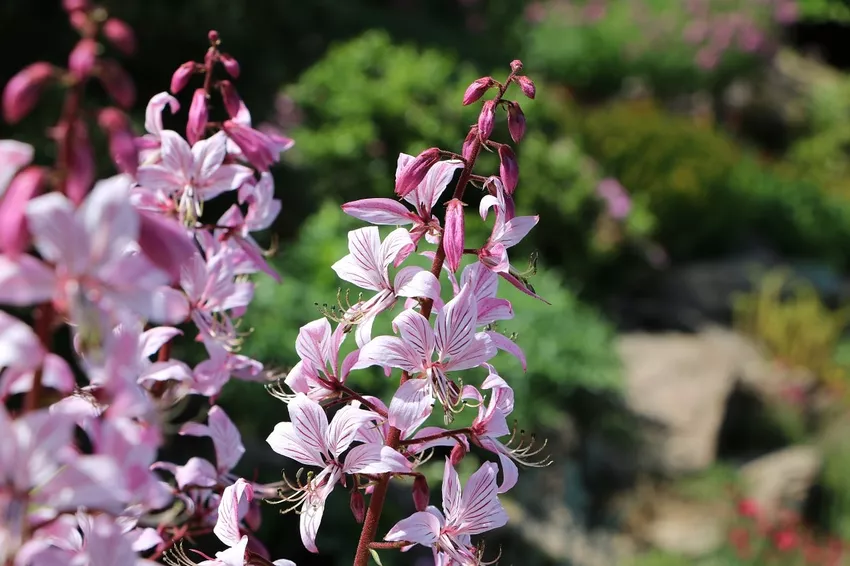
- Location: sunny to semi-shady
- Soil: permeable to water, rather dry, calcareous, poor in nutrients
- Flowering: June to July
- phototoxic part of the plant: mainly bristly leaves, stems and seed pods
- Skin reactions on contact: severe skin irritation, often only after subsequent tanning
Angelica (Angelica archangelica)

- Location: sunny to semi-shady
- Soil: fresh to swampy, rich in humus and nutrients
- Flowering: June to August
- phototoxic plant part: fresh plant sap
- Skin reactions on contact: high risk of sunburn (angelicadermatitis) for very sensitive people
Spotted hemlock (Conium maculatum)

- Location: warm and bright
- Soil: prefers deep, nutritious loamy soil
- Flowering: June to August
- phototoxic plant part: plant sap
- Reactions on contact: severe skin reactions, blistering sometimes only after hours
Notice: Spotted hemlock is one of the most poisonous plants in Germany and is not only dangerous because of its phototoxicity. This also applies to the water hemlock (Cicuta virosa).
Greater cartilaginous cartilage (Ammi majus)

- Location: sunny to off-sun
- Soil: profoundly fresh
- Flowering: June to September
- phototoxic part of the plant: especially the seeds
- Skin reactions on contact: varies according to skin sensitivity
M to W
Masterwort (Peucedanum ostruthium)
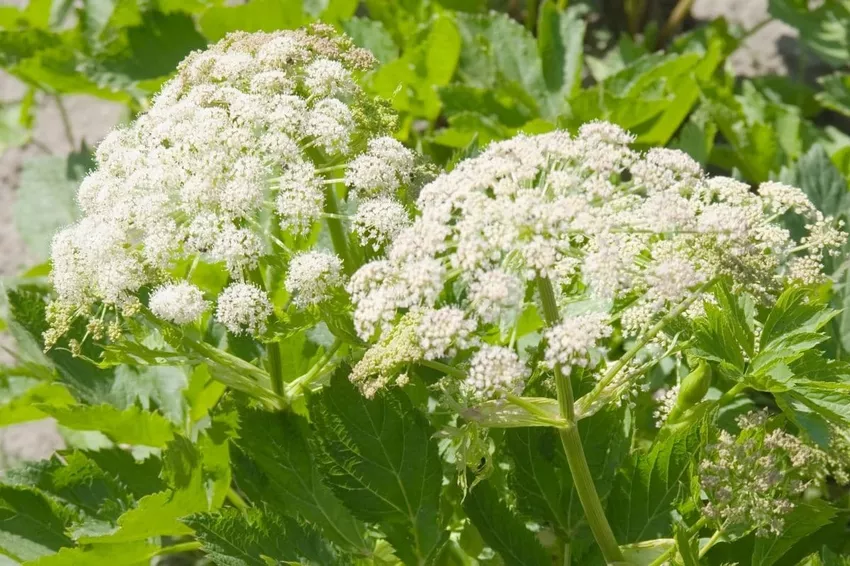
- Location: sunny to semi-shady
- Soil: moist, humic
- Flowering: June to August
- phototoxic plant part: plant sap
- Skin reactions on contact: severe skin irritation
Giant Hogweed (Heracleum mantegazzianum)

- Location: sun to shade
- Soil: nitrogenous, moist
- Flowering: June to August
- phototoxic plant part: all plant parts, especially the plant sap
- Contact reactions: severe skin inflammation with blistering
Rue (Ruta graveolens)

- Location: sunny to semi-shady
- Soil: permeable, lean, dry
- Flowering: June to July
- phototoxic part of the plant: surface of the leaves
- Reactions with the fresh herb: reddening of the skin and/or blistering with subsequent brownish pigmentation of the affected skin areas
Meadow Hogweed (Heracleum sphondylium)

- Location: sun to shade
- Soil: nitrogenous, moist
- Flowering: June to August
- phototoxic plant part: all plant parts
- Contact reactions: reddening and swelling of the skin
Phototoxic crops (selection)
A to F
Anise (Pimpinella anisum)

- Location: sunny
- Harvest: September or October
- phototoxic plant part: plant sap (e.g.: sap splashes) under sunlight
- Skin reactions on contact: Symptoms of burns
- Danger when harvesting or eating: no known cases to date
Dill (Anethum graveolens)

- Location: sunny to semi-shady
- Harvest: Cut off the tips from a height of 15 centimeters, from a plant height of 30 centimeters completely
- phototoxic plant part: plant sap (e.g.: sap splashes) under sunlight
- Skin reactions on contact: Symptoms of burns
- Danger when harvesting or eating: no known cases to date
Common fig (Ficus carica)

- Location: full sun
- Harvest: early varieties June or July; Main harvest in September
- phototoxic plant part: milky plant sap (e.g.: sap splashes)
- Skin reaction when exposed to sunlight: inflammation, blistering
Coriander (Coriandrum sativum)

- Location: sunny to semi-shady
- Harvest: spring to autumn
- phototoxic plant part: plant sap (e.g.: sap splashes)
- Reaction to contact with sunlight: photoallergic skin reactions, burns (in sensitive people)
- Danger when harvesting or eating: no known cases to date
Common celery (Apium graveolens)

- Location: sunny
- Harvest: from August
- Phototoxic plant part: especially tubers
- Skin reaction on contact: Burn symptoms
Notice: True celery is only phototoxic when the bulbs are infected by the fungus Sclerotina sclerotiorum. You can recognize the fungal infection by a pink-red coloring of the celery root.
Fennel (Foeniculum vulgare)

- Location: sunny
- Harvest: two to three months after planting, earliest planting time: April
- Phototoxic plant part: especially tubers
- Reaction on contact: different skin irritations depending on the sensitivity of the skin
- Danger when harvesting or eating: no known cases to date
K to W
Carrot (Daucus carota subsp. sativus)

- Soil: loose and sandy
- Harvest: early varieties seven weeks after sowing; other 10 to 11 weeks after sowing
- phototoxic plant part: beets and leaves (plant sap)
- Skin reaction on contact: varying degrees of skin irritation depending on the sensitivity of the skin
Lovage (Levisticum officinale)
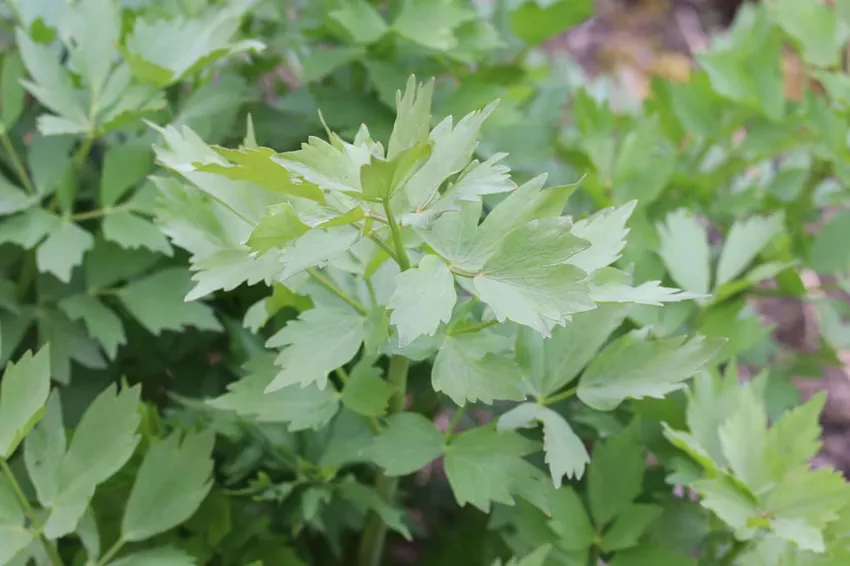
- Location: sunny to semi-shady
- Harvest: ideally before flowering
- phototoxic plant part: plant sap (e.g.: sap splashes) under sunlight
- Skin reaction on contact: Burn symptoms
- Danger when harvesting or eating: no known cases to date
Notice: In medical therapy, lovage can have a phototoxic effect.
Parsnip (Pastinaca sativa)

- Location: sunny to semi-shady
- Soil: loose and sandy
- Harvest: from September (depending on sowing)
- phototoxic plant part: all plant parts
- Skin reaction when exposed to sunlight: skin irritations of varying severity depending on the sensitivity of the skin
Parsley (Petroselinum crispum)
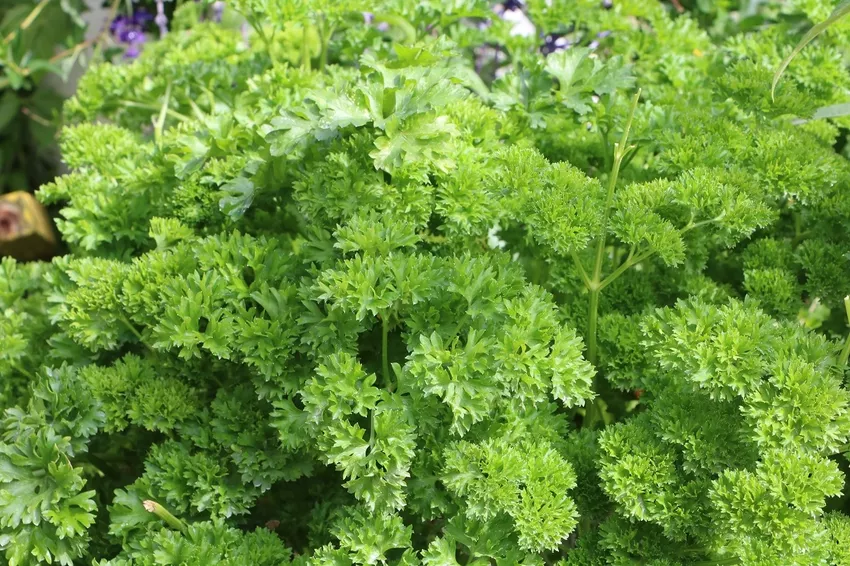
- Location: sunny to semi-shady
- Harvest: spring to autumn
- phototoxic plant part: plant sap (e.g.: sap splashes) under sunlight
- Skin reaction on contact: Burn symptoms
- Danger when harvesting or eating: no known cases to date
Meadow chervil (Anthriscus sylvestris)

- Location: sunny
- Soil: dry to fresh, loamy, rich in nutrients
- Flowering: May to July
- phototoxic plant part: all plant parts
- Skin reactions when touched: different strong reactions (depending on the sensitivity of the skin)
frequently asked Questions
Which first aid measures help?In most cases, it is recommended to wash the affected area of skin with soap and water. It also helps cool the skin. If blisters form, you should consult a doctor immediately.
Is it necessary to choose a doctor?Since touching plants that are phototoxic not only causes skin irritation but is also associated with severe pain, you should always consult a doctor so that the pain can be relieved.
Does phototoxic mean that light has to be involved?Yes, phototoxic, which means that there is a risk of a skin reaction to sunlight (UV radiation). However, the sun does not have to shine, as skin irritation can also occur when the sky is overcast. Therefore, you should be careful when handling plants that are phototoxic.